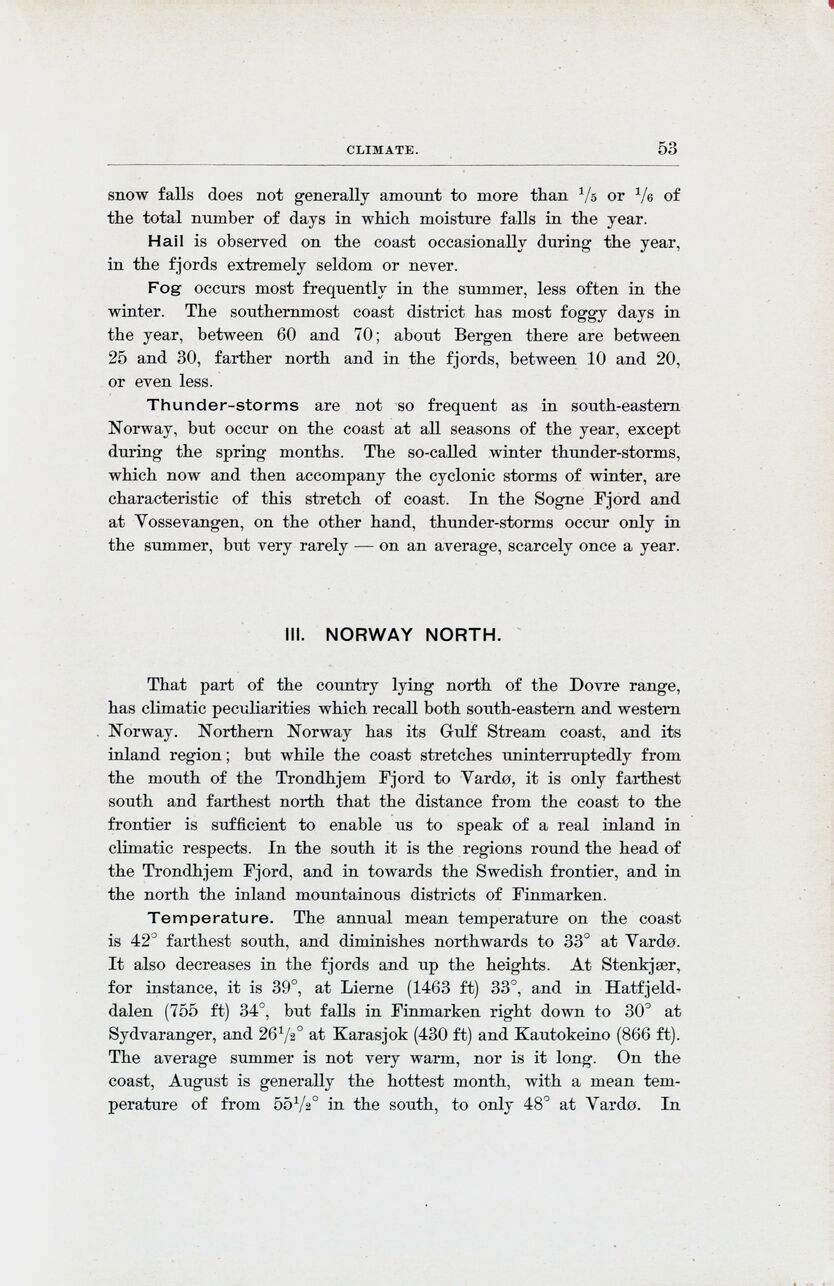
Full resolution (JPEG) - On this page / på denna sida - Climate, by Axel Steen

<< prev. page << föreg. sida << >> nästa sida >> next page >>
Below is the raw OCR text
from the above scanned image.
Do you see an error? Proofread the page now!
Här nedan syns maskintolkade texten från faksimilbilden ovan.
Ser du något fel? Korrekturläs sidan nu!
This page has been proofread at least once.
(diff)
(history)
Denna sida har korrekturlästs minst en gång.
(skillnad)
(historik)
snow falls does not generally amount to more than ⅕ or ⅙ of
the total number of days in which moisture falls in the year.
Hail is observed on the coast occasionally during the year,
in the fjords extremely seldom or never.
Fog occurs most frequently in the summer, less often in the
winter. The southernmost coast district has most foggy days in
the year, between 60 and 70; about Bergen there are between
25 and 30, farther north and in the fjords, between 10 and 20,
or even less.
Thunder-storms are not so frequent aa in south-eastern
Norway, but occur on the coast at all seasons of the year, except
during the spring months. The so-called winter thunder-storms,
which now and then accompany the cyclonic storms of winter, are
characteristic of this stretch of coast. In the Sogne Fjord and
at Vossevangen, on the other hand, thunder-storms occur only in
the summer, but very rarely — on an average, scarcely once a year.
<< prev. page << föreg. sida << >> nästa sida >> next page >>